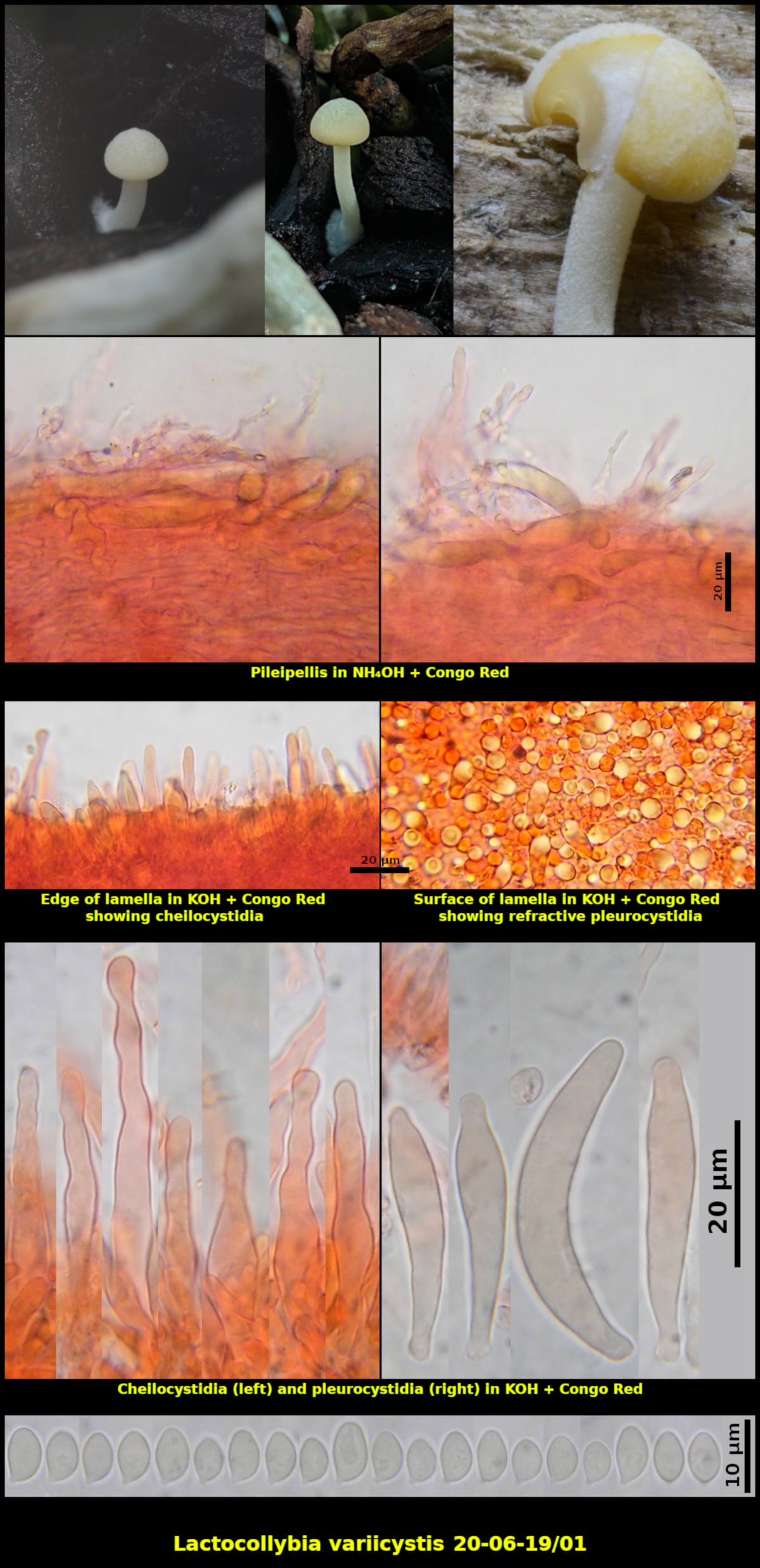Fleshy Fungi of New Brunswick >>
Lactocollybia variicystis
Lactocollybia variicystis D.A. Reid & Eicker

Scattered (several) over a period of three weeks, on bark mulch substrate with potted orchid houseplant, Little Lepreau, New Brunswick (20-06-19/01).
Basidiospores white in spore print, ellipsoidal to dacryoid to subfusoid, hyaline, smooth, unchanging in Melzer’s Solution, 5.4-8.1 x 3.6-4.7 μm, Q = 1.40-1.73 (average[30]: 6.4 x 4.1 μm, Q = 1.55). Basidia 4-spored, clamped at the base. Cheilocystidia abundant and forming a sterile margin, nearly cylindrical to lageniform, often with a wavy neck, with wall staining lightly in KOH + Congo Red, clamped at the base, 28-52 x 2.6-7.5 μm. Pleurocystidia produced as gloeocystidia, abundant, distributed over the edges and faces of the lamellae, ventricose to sublageniform, with a uniform refractile content, with walls staining weakly or not at all in KOH + Congo Red, clamped at the base, 32-48 x 5.4-6.8 μm. Pileipellis a loose trichoderm of narrow branched hyphae, bearing numerous cystidia and gloeocystidia similar to those of the lamellae, overlying a dense parallel subcutis of broad yellow oleiferous hyphae. Stipitipellis similar to the pileipellis, consisting of a loose tangled trichoderm bearing numerous cystidia and gloeocystidia.
This is not exactly a legitimate record of a fungus occurring in New Brunswick. The houseplant was purchased at a Sobey's supermarket in Saint John, original source unknown. If the source of the mulch is one that is regularly used for such plants the mushroom may yet appear again.
The genus Lactocollybia is rarely reported in the mycological liiterature. The species are mostly tropical or subtropical, never being reported in places with cold winters. Lactocollybia_variicystis was originally described from a stump, possibly a willow, near Pretoria, South Africa (Reid, D.A. & Eicker, A. 1998. South African Fungi 6. The genus Lactocollybia (Basidiomycota) in South Africa. Mycotaxon 66: 153-163). In spite of the huge geographical distance our material seems to fit the original description quite closely, differing mainly from that species in its more sublageniform pleurocystidia.
Lactocollybia_variicystis, like other members of its genus, is characterized but the presence of large yellow refractive hyphae in the surface layers of the pileus and stipe, referred to by Reid and Eicker as a "gloeosystem". These cells are also present in the trama of the lamellae where they give rise to the pleurocystidia, properly called "gloeocystidia".
Photographs: Middle picture at top by Bruce Malloch, others by D. Malloch (20-06-19/01).